Harun Farocki 1944-2014
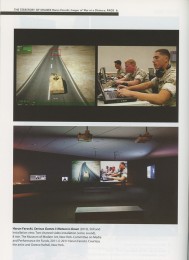 RIP Harun Farocki, a filmmaker who has been a great inspiration to me and to many people I admire. Still surprised at the loss nearly a month later, and with gratitude for his prolific, insightful, and inscrutable work that is not without humor, I am sharing a PDF of the review I wrote of his exhibition at MoMA, (June 2011-January 2012) for Millennium Film Journal’s Structures and Spaces: Cine-Installation issue: The Territory of Images: Harun Farocki, Images of War (at a Distance).
RIP Harun Farocki, a filmmaker who has been a great inspiration to me and to many people I admire. Still surprised at the loss nearly a month later, and with gratitude for his prolific, insightful, and inscrutable work that is not without humor, I am sharing a PDF of the review I wrote of his exhibition at MoMA, (June 2011-January 2012) for Millennium Film Journal’s Structures and Spaces: Cine-Installation issue: The Territory of Images: Harun Farocki, Images of War (at a Distance).
Re-reading the review, I am struck by how relevant Farocki’s recent installation work is in relation to the shooting of Michael Brown and the apparent militarization of the police force in Ferguson, revealed during the protests that followed. Particularly, Farocki’s highlighting of ideologically inscribed practice simulations that soldiers are trained with speaks to the ways in which pre-conceived notions of race and urban space have been playing out through social media and how, in online video of the protests, the police officers, with all their gifted military equipment, appear to be play-acting in a war-themed video game. Farocki’s I Thought I Was Seeing Convicts feels like an evergreen critique of institutionalized authority. In Ferguson, curfews, armed police and tear gas maintain the town as a space of discipline and containment.
Our Nixon review in MFJ
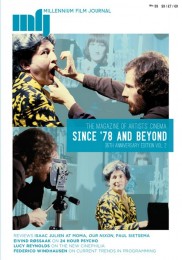 My review/essay on the film Our Nixon, by Penny Lane and Brian Frye, is just out in the latest issue of Millennium Film Journal, part II of the Since ’78 and Beyond anniversary issue. The essay addresses, in depth, Lane and Frye’s use of archival materials to retell the Nixon narrative, including their process of obtaining original super 8 footage and having it scanned at high resolution by Jeff Kreines and his Kinetta machine.
My review/essay on the film Our Nixon, by Penny Lane and Brian Frye, is just out in the latest issue of Millennium Film Journal, part II of the Since ’78 and Beyond anniversary issue. The essay addresses, in depth, Lane and Frye’s use of archival materials to retell the Nixon narrative, including their process of obtaining original super 8 footage and having it scanned at high resolution by Jeff Kreines and his Kinetta machine.
You can subscribe to MFJ and get the issue, watch Our Nixon on Netflix and read the essay à la PDF here.
JODI: Street Digital
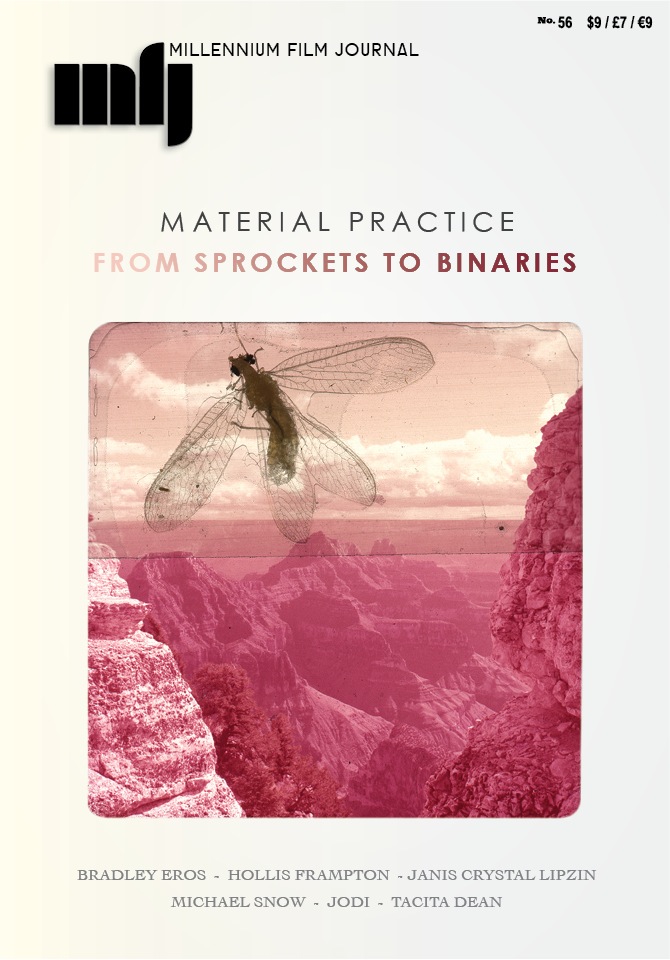 The latest issue of the Millennium Film Journal, MFJ No. 56, with a focus on “material practice” came out during Superstorm Sandy. It includes my review of JODI’s show at the Museum of the Moving Image, Street Digital, curated by Michael Connor. JODI (Joan Heemskerk and Dirk Paesmansare) have been heroes of mine since I first encountered their net.art in the 1990s and I was so excited to experience a full museum show of their recent work in NYC. Here is a favorite recent project of theirs: Folksomy – a crowd-sourced collection of videos of “people doing strange things with computers.” “Folksomy” is a misspelling of the term “folksonomy” (which is a term that refers to a the process of tagging things on the Internet by a large cross section of people thereby creating a common denominator of semantic order). If you feel lost,
The latest issue of the Millennium Film Journal, MFJ No. 56, with a focus on “material practice” came out during Superstorm Sandy. It includes my review of JODI’s show at the Museum of the Moving Image, Street Digital, curated by Michael Connor. JODI (Joan Heemskerk and Dirk Paesmansare) have been heroes of mine since I first encountered their net.art in the 1990s and I was so excited to experience a full museum show of their recent work in NYC. Here is a favorite recent project of theirs: Folksomy – a crowd-sourced collection of videos of “people doing strange things with computers.” “Folksomy” is a misspelling of the term “folksonomy” (which is a term that refers to a the process of tagging things on the Internet by a large cross section of people thereby creating a common denominator of semantic order). If you feel lost, CLICK HERE.
The Territory of Images
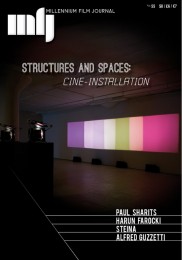
Thanks to the Millennium Film Journal I have had the opportunity to write about another one of my heroes, Harun Farocki. In the latest issue, MFJ55 Structures and Spaces, is my essay/review “The Territory of Images: Harun Farocki, Images of War at a Distance” on his show at the Museum of Modern Art. MoMA is collecting nearly all of his work, so one room had a video library that allowed visitors to watch many of his single channel works on demand. The rest of the space in the exhibition was devoted to installation work from the last ten years. This work addresses implications of newer perceptual apparatuses (video surveillance, automated remote warfare, virtual reality simulations) – forms that more explicitly articulate and complicate the politics of geography and space.
Cinematic Time Replayed
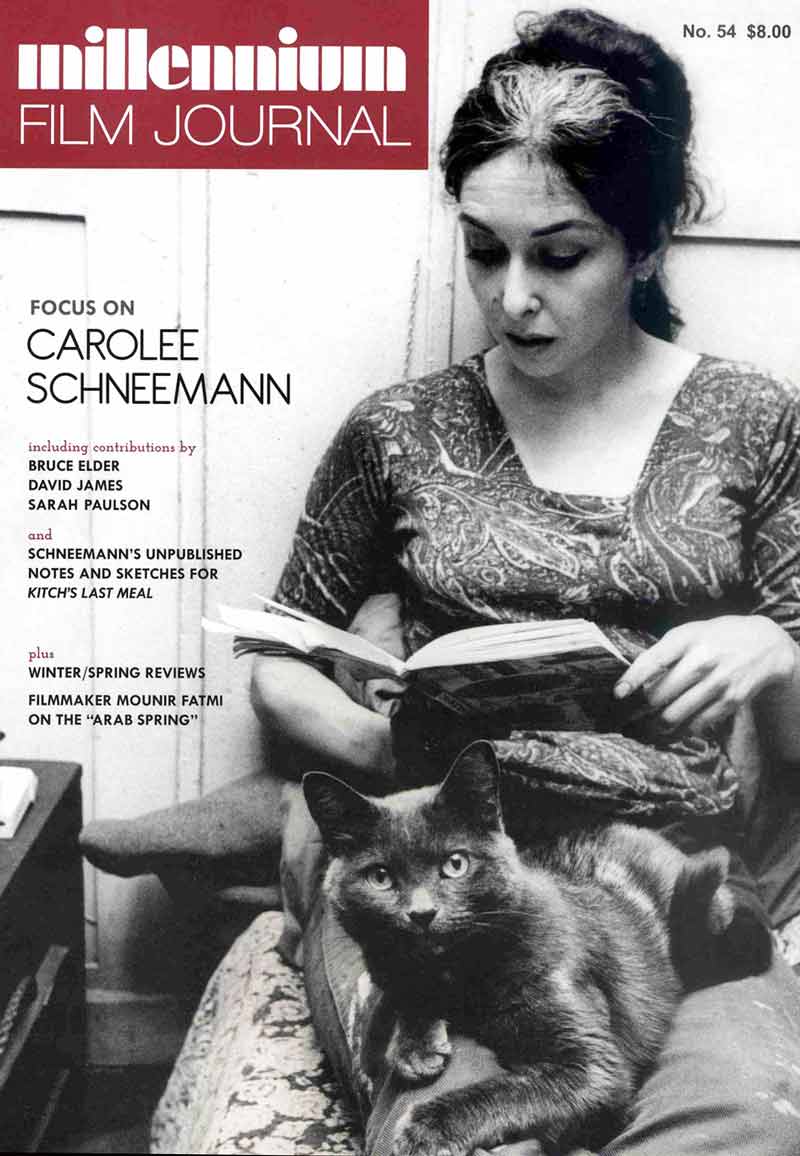
The newly redesigned Millennium Film Journal No. 54 is out. It includes my essay “Cinematic Time Replayed” – a review of two shows: Hubbard and Birchler’s Méliès at Tanya Bonakdar Gallery and Christian Marclay’s The Clock at Paula Cooper Gallery. It compares the way the pieces re-engage cinema’s inherent relationship to time, one looking to socially inscribed place and space (the trace), the other organized around the algorithm, accumulation and omission (the cut).
